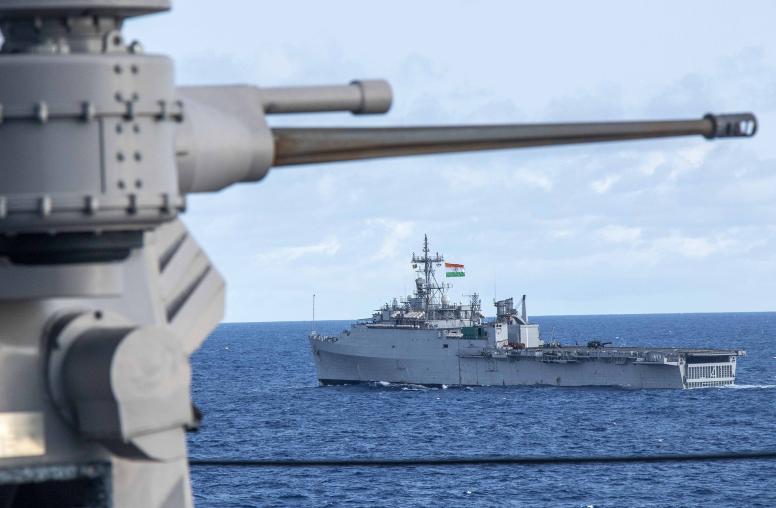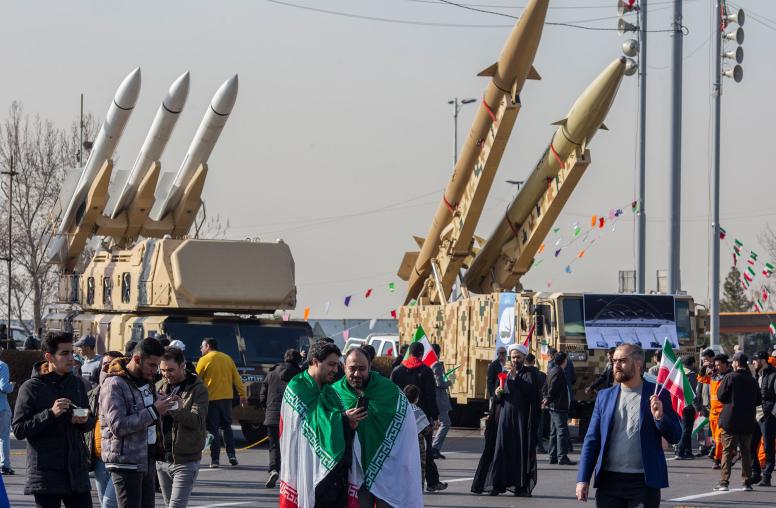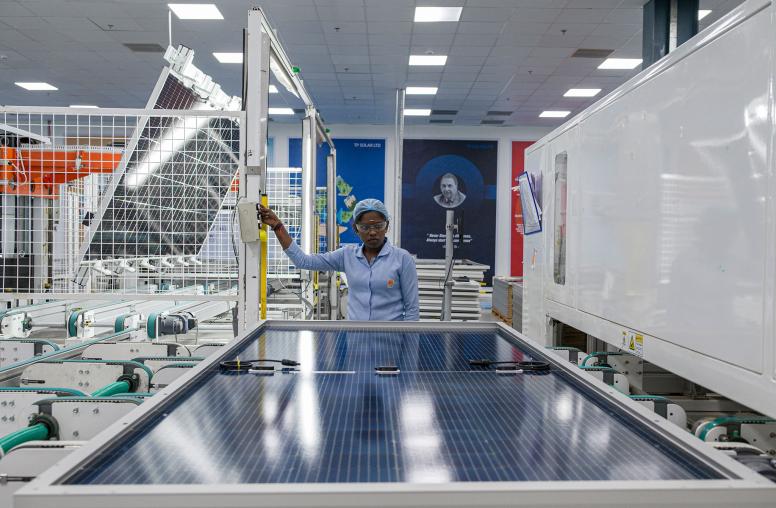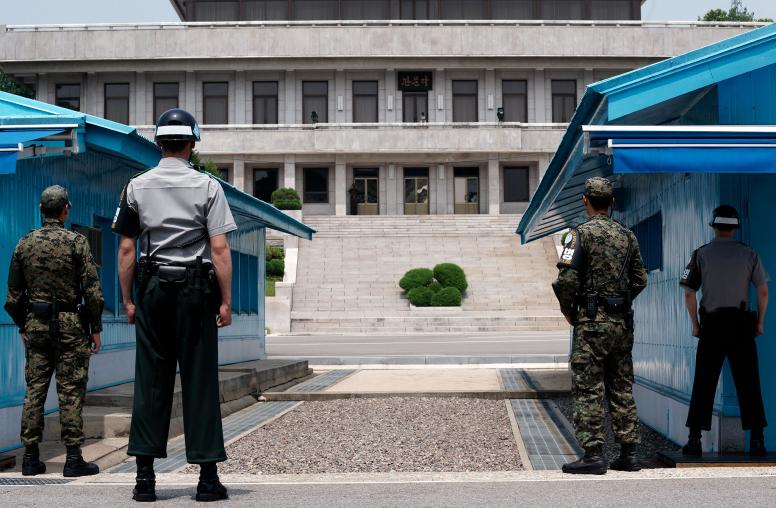Twenty Years After 9/11, It’s Time to Prioritize Diplomacy and Development
Largescale military interventions alone cannot address today’s complex threats to U.S. national security
As we mark the somber 20th anniversary of the 9/11 attacks amid a global pandemic, the complexity of 21st century national security threats is all too evident. Another milestone — the end of the U.S. military intervention in Afghanistan — underscores the shortcomings of the United States response to this tragic terrorist attack: large-scale military interventions. We have seen that these multifaceted, transnational threats demand a whole-of-government approach with diplomacy, peacebuilding and development at the forefront. Twenty years after 9/11, as the United States pivots away from a “forever wars” posture, a renewed commitment to upgrade our diplomacy, peacebuilding and development toolkits should be prioritized.

The 9/11 attacks were the deadliest foreign attacks on U.S. soil since Pearl Harbor — but they were not launched by a conventional military. The attacks were undertaken by a non-state actor employing unconventional means in the name of a violent, extremist ideology. Over the ensuing two decades, globalization and emerging technologies facilitated the spread of this ideology.
9/11 Foreshadowed What Was To Come
Coinciding with the dawn of a new millennium, the 9/11 attacks heralded a new era of threats to U.S. national security. The attacks foreshadowed the nature of 21st century threats: complex, evolving, multifaceted and transnational with far-reaching domestic and global implications. Indeed, 20 years later such threats have only multiplied. The Biden administration’s Interim National Security Strategy enumerates these unconventional challenges including “from violent and criminal non-state actors and extremists, and from threats like climate change, infectious disease, cyberattacks, and disinformation that respect no national borders.”
The world has evolved away from what some saw as a “unipolar moment” after the fall of the Soviet Union, characterized by U.S. predominance as the sole remaining superpower. Today’s complex challenges arise in a multipolar world that includes a rising China, a revisionist Russia and a panoply of regional powers that pose threats to U.S. national security interests.
By their very nature, complex threats to U.S. national security cannot be effectively addressed through military-dominant responses. In many cases, the military’s role should be minimal. For example, security-focused interventions are of limited relevance when confronting issues such as climate change or global pandemics. Instead, these threats require an integrated approach that harnesses all instruments of power across the U.S. government. Diplomacy is critical to the global cooperation and collective action needed to coalesce foreign governments and non-governmental and non-traditional stakeholders around concerted action.
In other instances, an over-reliance on military or “kinetic” solutions can exacerbate rather than resolve challenges. Despite significant U.S. investment in largescale military interventions in response to 9/11, many of the drivers of extremism present in 2001 persisted — and in some cases have deepened. The 2011 Arab uprisings were a clear indicator that popular grievances against repressive governments in the region remained unaddressed. Most dramatically, the rise of the Islamic State and its so-called “caliphate”— at its height encompassing one-third of Iraq and Syria and with 10 million people living under its control — underscored the continued appeal of violent extremist ideology in the face of widespread corruption, repression and poor governance. The Taliban’s victory in Afghanistan is yet another example.
In the face of challenges which cannot be addressed solely through military means, these distortions led to less effective approaches to U.S. national security challenges. Military leaders voiced growing concerns that the leveraging of diplomacy and development was out of balance. As just one example, in a letter to Congress in 2017, more than 120 retired military leaders underscored their “strong conviction that elevating and strengthening diplomacy and development alongside defense are critical to keeping America safe.” Recognizing the complexity of 21st century crises, they noted that these problems “do not have military solutions alone.”
Taken together, diplomacy, peacebuilding and development approaches are best placed to address the many facets that constitute complex 21st century challenges. Reflecting on the 20th anniversary of 9/11 and the failure of large military interventions to bring peace and stability, the paramount role of diplomacy and development in defending our national security interests is increasingly apparent.
Yet, our diplomacy, peacebuilding and development toolkits have not evolved rapidly enough to keep pace with the many challenges confronting U.S. national security.
Three Priorities for a Complex Era
Looking forward, we should focus on three key priorities: (1) better aligning diplomacy, peacebuilding and development to the complex challenges we face; (2) devoting more resources to these key components of U.S. power and (3) developing innovative tools and approaches that are better suited for addressing complex threats.
First, rebalancing the roles of diplomacy, development and defense is essential. With the era of largescale military interventions coming to an end, enhancing the role of diplomacy, peacebuilding and development in our national security strategy is essential. Groundbreaking initiatives such as the Stabilization Assistance Review (SAR) and the Global Fragility Act (GFA) mark critical first steps in asserting greater coherence across the U.S. government when addressing post-conflict stabilization and preventing violence and extremism. However, much more needs to be done to elevate diplomacy, peacebuilding and development to their rightful role in defending U.S. national security interests. The Biden administration should prioritize effectively implementing the SAR and GFA and ensuring their success.
Second, investing greater resources — financial, human and technological — in diplomacy, peacebuilding and development will help elevate these critical elements of U.S. power. Rebalancing should be bolstered by increased resources to reflect the enhanced importance of diplomacy, peacebuilding and development. Numerous reports and studies underscore the need to revitalize the State Department. Meanwhile, USAID has made important progress on its internal reforms, but such efforts must continue. At the same time, U.S. foreign aid accounts for less than 1 percent of the federal budget, and the United States consistently ranks among the lowest of developed countries with respect to its foreign assistance as a percent of GDP. Shortfalls in qualified civilian staffing stands as another challenge. In its most recent “lessons learned” report, the Special Inspector General for Afghanistan Reconstruction repeatedly underscored that civilian agencies such as State and USAID were unable to perform their roles effectively due to a lack of qualified staff. As the United States pivots from largescale military interventions, devoting greater resources to diplomacy, peacebuilding and development will be central to a strategy centered on these key elements of U.S. power.
Third, creating an Advance Research Projects Agency for Peacebuilding/Diplomacy — an ARPA-P/D — could transform the fields of peacebuilding and diplomacy by concentrating efforts on creating new tools to address 21st century challenges. President Biden has proposed the creation of an ARPA-H to fund health research, and a similar platform could be created to fund cutting-edge research on developing new tools and approaches for peacebuilding and diplomacy. Modeled on the Defense Department’s Defense Advanced Research Projects Agency, or DARPA, which led to the creation of the internet and GPS, establishing an ARPA-P/D could catalyze diplomacy and peacebuilding innovations, helping to modernize the diplomacy and peacebuilding toolkits.



